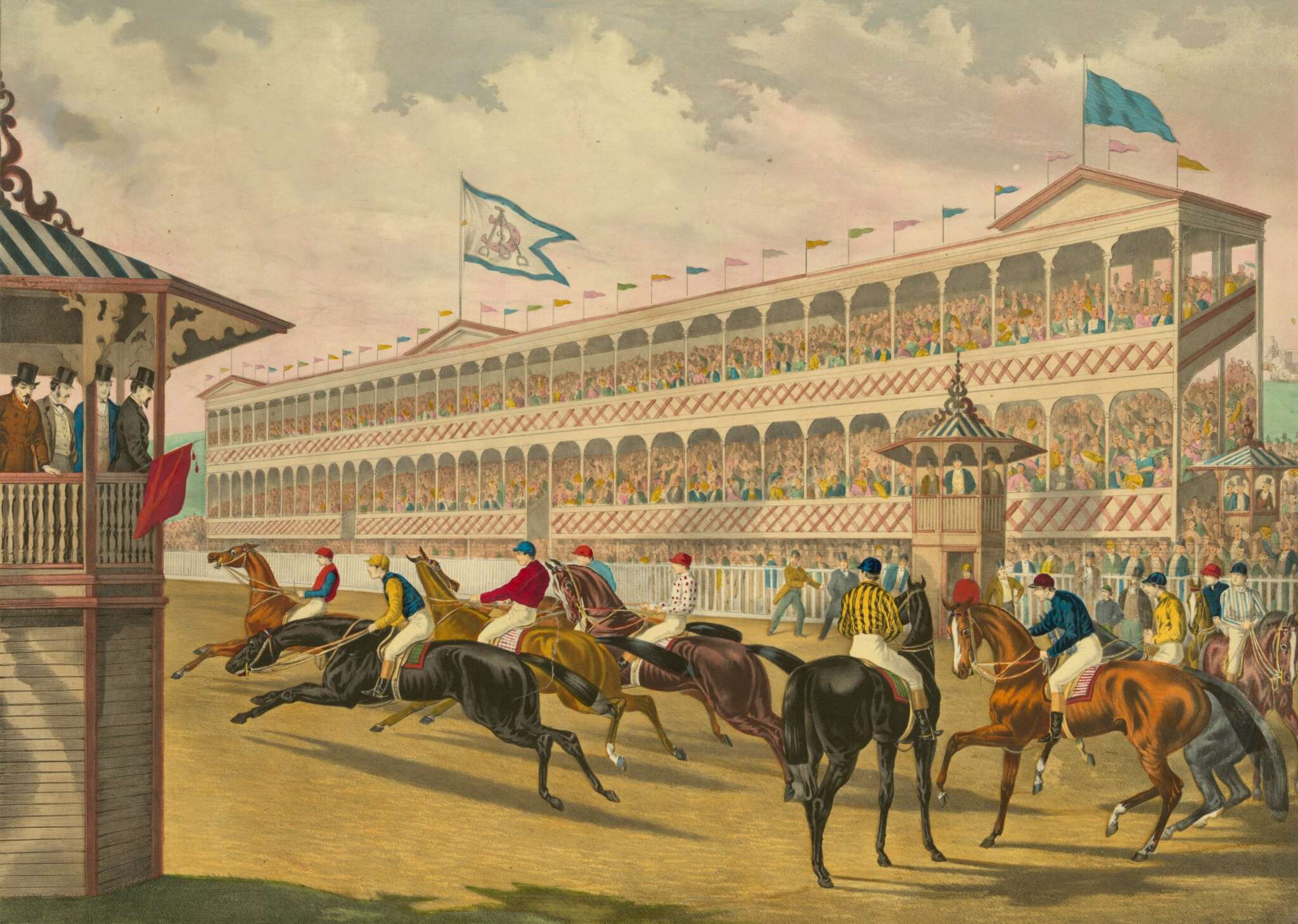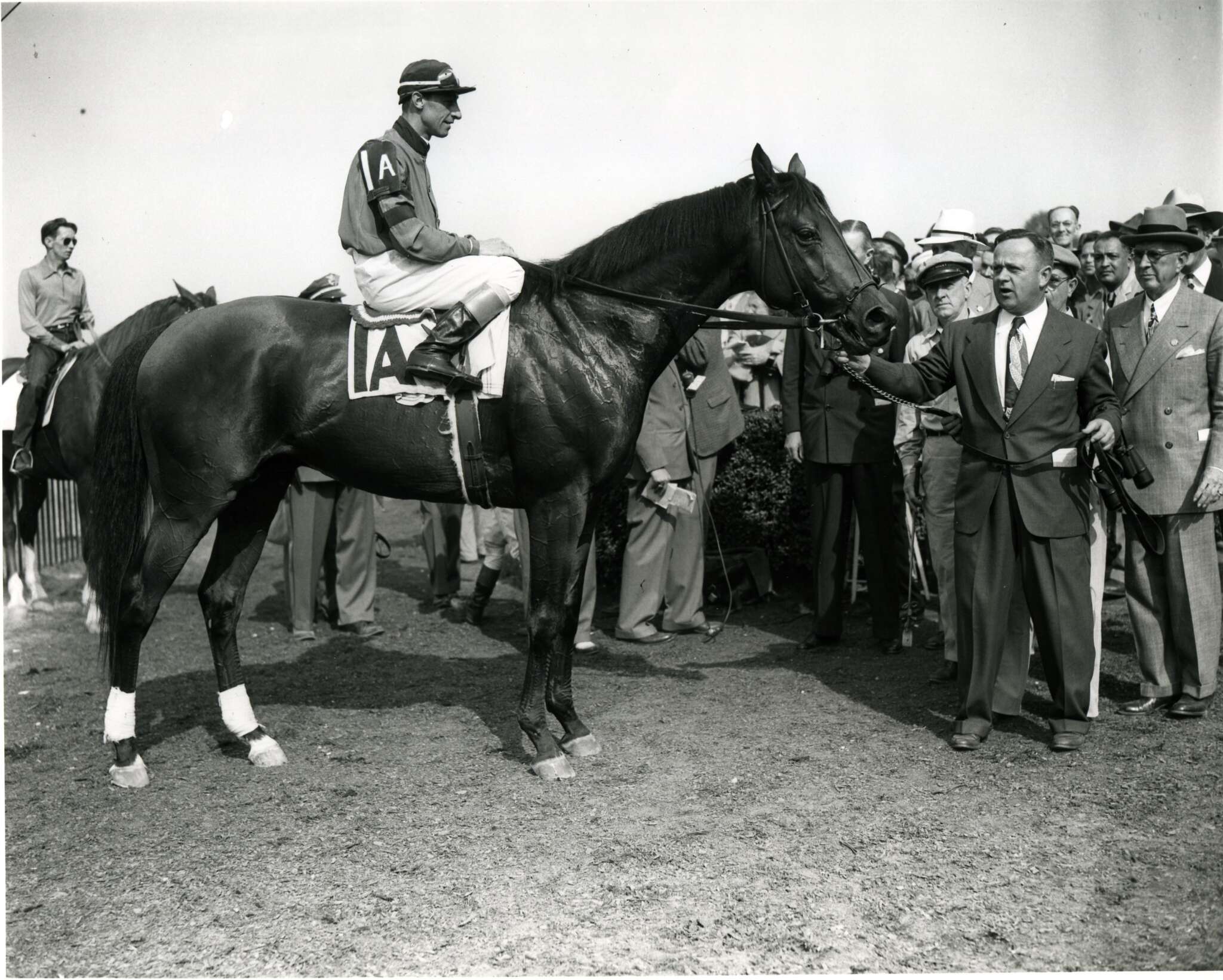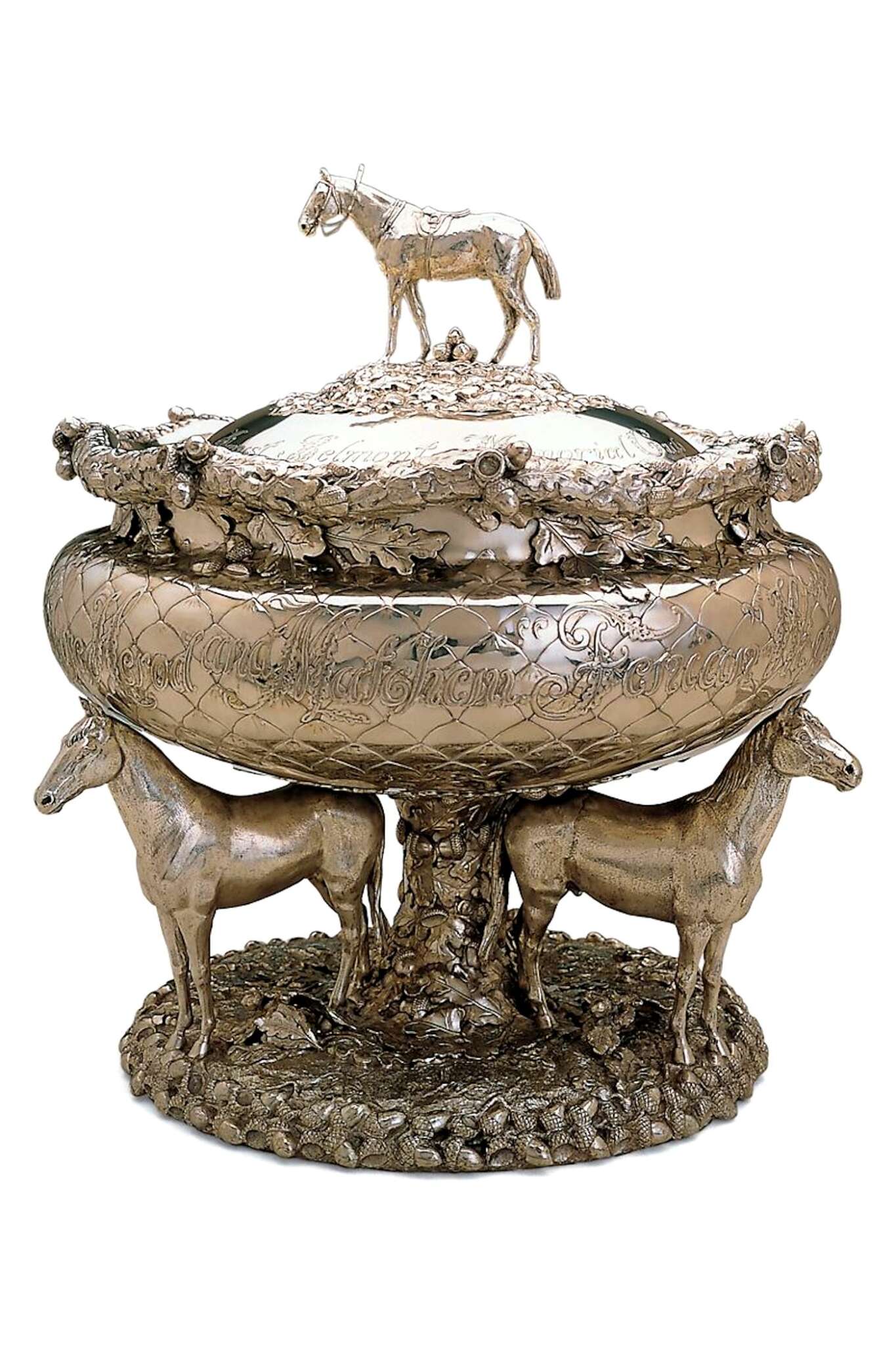Few Thoroughbred races worldwide can match the stature and historical significance of the Belmont Stakes. While the Kentucky Derby has greater name recognition to casual fans as an event of widespread cultural appeal, the Belmont can claim two significant honors the Derby can’t—its role of stamping greatness as the definitive third jewel in the American Triple Crown and its legacy impact as the race that has produced more Hall of Fame members than any other. (Through 2023, the Belmont has had 40 of its winners enshrined in the National Museum of Racing’s Hall of Fame—more than both the Derby [36] and Preakness Stakes [34]). As a championship-level contest, the Belmont ranks among racing’s most important and iconic events.
The history of the Belmont traces back to 1867, giving it the distinction of being the oldest of the Triple Crown races, predating the inaugural Preakness (1873) by six years and the first Derby (1875) by eight. More history will be made in 2024 and 2025 with the 156th and 157th runnings of the Belmont taking place at Saratoga Race Course, America’s oldest racetrack.
To say the Spa City is buzzing with anticipation for the arrival of the Belmont is a grand understatement: Saratoga is downright electric. Hotel rooms were scarce months in advance of the four-day racing festival, and numerous restaurants were also quickly booked solid. The Belmont Stakes Racing Festival begins Thursday, June 6, but the special events in town kick off earlier that week, beckoning tens of thousands of racing fans to the Spa City. For the thousands of fans who will be in town without tickets to the track—Belmont Stakes day tickets were sold out almost immediately—numerous venues throughout Saratoga Springs and the surrounding area are planning viewing parties. The week-long bash concludes with a loaded card featuring New York–breds
on Sunday, June 9.

The two-year venue change to Saratoga and the tweaks that come with it are but the latest twists and turns in the story of the Belmont. Long referred to as the “Test of the Champion,” the Belmont has been a signature contest in Thoroughbred racing since its inception—a challenge requiring the talent, stamina and heart possessed by all great racehorses. But while the traits of its winners have remained consistent, the race itself has undergone substantial variations. Distance, location and race conditions have fluctuated…and that’s only the beginning. A deep dive into the Belmont’s archives reveals an event that has experienced significant alterations to many of its characteristics since Hall of Fame filly Ruthless prevailed in the inaugural 1867 edition. Customarily held in early June, the Belmont once took place in November. There was also an edition that was held at the same track on the same card as the Preakness Stakes.
Truth really can be stranger than fiction.
Anyone clutching their pearls at the Belmont Stakes not being run at Belmont Park (or screaming “asterisk!” at the distance reduction to 1¼ miles) surely doesn’t know the history of this iconic race. America was in a traumatic struggle to piece itself back together in the aftermath of the physical carnage and emotional strife of the Civil War when Ruthless took the inaugural Belmont at the grand old venue of Jerome Park in Westchester County. The contest was named for August Belmont I, a wealthy financier and sportsman who helped fund Jerome Park’s construction and served as its
first president. Jerome Park played host to the first 23 runnings of the Belmont from 1867 through 1889. When that track closed, Morris Park—built near Jerome Park on land that was later annexed into the Bronx—served as the race’s home from 1890 through 1904.
By the time Belmont Park opened in 1905, the Belmont Stakes had already been contested 38 times at two sites and five distances: 1⅝ miles from 1867 through 1873; 1½ miles from 1874 through 1889; 1¼ miles from 1890 through 1892 and in 1895 and 1904; 1⅛ miles in 1893 and 1894; and 1⅜ miles from 1896 through 1903. Whew.

One of the more obscure editions of the Belmont Stakes was when Burlington won in 1890, the first year the race was held at Morris Park. A crowd of 15,000 was on hand and the spectators had the unique experience of also witnessing that year’s Preakness, an undercard race won by 5-year-old gelding Montague under handicap conditions and without an age restriction. Another oddity of the 1890s was the 1895 edition being postponed and almost scrapped because of new laws that banned bookmaking in New York; it was eventually rescheduled for November 2. Won by Belmar (also that year’s Preakness winner), the 1895 Belmont race chart noted that the “New York Jockey Club closed out its affairs. Race run under the jurisdiction of the Westchester Racing Association.”
One of the most notable renewals of the Belmont was the first one held at Belmont Park in 1905. A chestnut filly named Tanya stole the show and earned her place in Belmont lore by becoming the first filly since Ruthless to win the race. After Tanya, 102 years passed before another filly, champion Rags to Riches, achieved the glory of a Belmont victory.
Since its 1905 opening, Belmont Park has played host to its namesake race annually, with the only exceptions being 1963 through 1967, when a renovation project necessitated a move to Aqueduct that was not unlike what we’re experiencing now during the race’s two years at The Spa. The race was not contested in 1911 and 1912, when the sport was shut down in New York because of anti-gambling legislation.
Thirteen horses—Sir Barton (1919), Galant Fox (1930), Omaha (1935), War Admiral (1937), Whirlaway (1941), Count Fleet (1943), Assault (1946), Citation (1948), Secretariat (1973), Seattle Slew (1977), Affirmed (1978), American Pharoah (2015) and Justify (2018)—have earned immortal status by winning the Triple Crown, but the history of the calendar placement for the Kentucky Derby, Preakness and Belmont has been jumbled on numerous occasions.
Since 1931, the order of Triple Crown races has been the Kentucky Derby first, on the first Saturday of May, followed by the Preakness two weeks later, and then the Belmont three weeks after that. (The only exception to this since 1931 was in 2020, when the COVID-19 pandemic necessitated the Belmont leading off the series on June 20, followed by the Derby on Sept. 5, and finally the Preakness on Oct. 3. The 2020 Belmont was also shortened to 1⅛ miles, marking the only time since 1926 the race has not been contested at 1½ miles.) Before the current established coordination of the series, the Preakness was run before the Derby 11 times. Twice, in 1917 and 1922, the Preakness and the Derby were held on the same day. On 11 occasions, the Belmont was run before the Preakness.

The term “Triple Crown” was not popularized until the 1930s, when Gallant Fox and his son, Omaha, came along. Prior to that, as accomplished as he was, Sir Barton, inaugural winner of what would later be known as the Triple Crown, found his 1919 achievement quickly overshadowed by the mighty Man o’ War. Owned by Samuel D. Riddle, Man o’ War was not entered in the Kentucky Derby in 1920, but he won the Preakness with ease and dominated the Belmont by 20 lengths. A footnote to Man o’ War’s Belmont victory was that it was the last of 51 editions run in the English tradition of the clockwise direction. In 1921, the route was flipped counterclockwise, which has remained the format ever since.
Count Fleet’s 25-length margin of victory in 1943 stood as the Belmont record until Secretariat’s 31-length romp in 1973. Secretariat also ended a 25-year drought between Triple Crowns and his time of 2:24 set and remains both the Belmont and American record for the distance on dirt 51 years later. CBS announcer Chic Anderson famously described Secretariat as a “tremendous machine” during his jaw-dropping Belmont run. More than 50 years later, the legacy of Secretariat and what he accomplished on June 9, 1973 remains the standard by which all others are measured in racing and, specifically, the Belmont.
The Belmont has also been known for monumental upsets and has thwarted many Triple Crown hopefuls. Twenty-three horses that won both the Derby and Preakness have failed in their attempt to win the Belmont, including Hall of Famers such as Northern Dancer, Spectacular Bid, Silver Charm, Sunday Silence and Alysheba. A record crowd of 120,139 attended the 2004 Belmont when Smarty Jones was denied the Triple Crown by Marylou Whitney’s Birdstone. It was the third straight year a Triple Crown hopeful was defeated in the Belmont. The gracious Whitney, understanding the impact of a potential Triple Crown on the sport, apologized to the owners of Smarty Jones for her horse winning the race. When California Chrome faded in the stretch of the 2014 Belmont with a Triple Crown on the line, many wondered if the sport would ever see another horse accomplish the feat. Then came American Pharoah in 2015 and Justify three years later.
Who’s next? Perhaps America’s 14th Triple Crown winner will be crowned in the Spa City. What an amazing chapter in Saratoga’s distinctive history that would be.
Belmont Stakes Facts
Saratoga Race Course will be the fifth track to play host to the Belmont Stakes. The event has previously been held at Jerome Park, Morris Park, Belmont Park and Aqueduct Race Track.
The race has been contested at five different distances:
- 1⅛ miles
- 1¼ miles
- 1⅜ miles
- 1½ miles
- 1⅝ miles
Largest margins of victory:
- 31 lengths (Secretariat, 1973)
- 25 lengths (Count Fleet, 1943)
- 20 lengths (Man o’ War, 1920)
Most wins by an owner:
- 6 (Belair Stud: 1930, 1932, 1935, 1936, 1939, 1955)
- 6 (James R. Keene: 1879, 1901, 1904, 1907, 1908, 1910)
Most wins by a jockey:
- 6 (James McLaughlin: 1882, 1883, 1884, 1886, 1887, 1888)
- 6 (Eddie Arcaro: 1941, 1942, 1945, 1948, 1952, 1955)
Most wins by a trainer:
- 8 (James Rowe, Sr.: 1883, 1884, 1901, 1904, 1907, 1908, 1910, 1913)
Women who won the Belmont:
- Julie Krone (jockey, 1993)
- Jena Antonucci (trainer, 2023)
Fillies who won the Belmont:
- Ruthless (1867)
- Tanya (1905)
- Rags to Riches (2007)
Foreign-bred horses who won the Belmont:
- Saxon (1874, bred in England)
- Bowling Brook (1898, bred in England)
- Hourless (1917, bred in England)
- Johren (1918, bred in England)
- Gallant Man (1957, bred in Ireland)
- Cavan (1958, bred in Ireland)
- Celtic Ash (1960, bred in England)
- Go and Go (1990, bred in Ireland)
- Victory Gallop (1998, bred in Canada)
